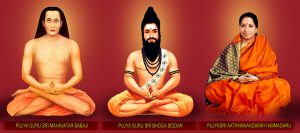Masik Shivaratri is a monthly festival that is dedicated to the Supreme Lord Shiva. The festival is celebrated on the 14th day of each month during the waning moon (Krishna Paksha) half which also happens to be the night before Amavasya (New Moon Day). The Shivratri in the month of Magha (in south India) or Phalguna (in north India) is known as Mahashivaratri..
A lunar month has two fortnights and begins with the New moon, (Amavasya).
Paksha (or pakṣa: Sanskrit: पक्ष) refers to a fortnight or a lunar phase in a month. Literally meaning “side”, a paksha is the period either side of the Full Moon Dayz (Purnima). The first fortnight between New Moon Day and Full Moon Day is called “Shukla Paksha” (lit. ’white/bright/golden side’) the period of the brightening moon (waxing moon), and the second fortnight of the month is called “Krishna Paksha” (lit. ’dark/black side’), the period of the fading moon (waning moon).
Shiva is the Supreme Consciousness that illuminates the three states of waking, dreaming and deep sleep. The devotees of Lord Shiva observe fast on this day to seek blessings.
Every Shivaratri night there is a natural upsurge of energies within the human system. This energy can only be made use of by those who have straight vertical spinal cords or spines. Only humans have evolved to that level of the vertical spine. Therefore, keeping the spine straight and vertical on Shivaratri night has immense benefits. It is therefore recommended that all Sushumna Kriya Yogis do the 49-minute midnight meditation on Shivaratri day.

